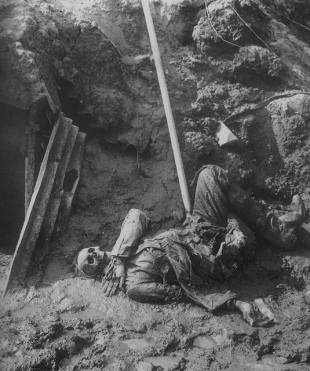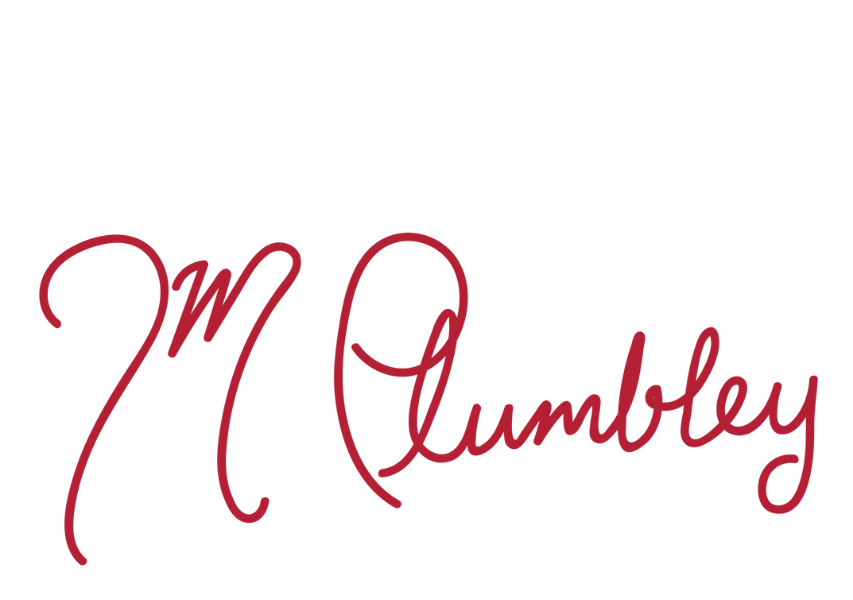Ah, World War I: an especially large-scale example of humanity getting itself into way deeper water than it was prepared for. 18-year-olds marched bravely with bayonets, just as their fathers and father’s fathers had done before them, to face enemies with mustard gas and machine guns. Add to that a dash of corpse-clogged trenches, a pinch of aggressive rats, and a heavy dose of feet-rotting mud, and you start to run out of adjectives that would adequately describe the experience. When I think of that war and what it did to people psychologically, I think of this photo:

A Canadian Soldier in 1916 who is pretty damn far from okay.
So that’s pretty much the baseline for this post. When your world is that inside out, what sort of supernatural monster could keep you up at night?
Let’s situate ourselves in the Belgian city of Mons. Mons was the place where the British entered the war, and the place where its last shot was fired. The official Battle of Mons is nigh legendary, where a group of British soldiers defied the odds and held off a large number of Germans for two weeks before being forced back. During that battle, men reported visions of angelic archers coming to the Allies’ aid. But we’re not here to talk about inspiring things. We’re here for what happened after.
According to Canadian Captain F.J. Newhouse, on November 14, 1914, a man named Captain Yeskes took four men out to patrol no man’s land. They never came back. This in itself was not unusual–”no man’s land” was not so named for its hospitality. But when another team went to recover their corpses, they found them not riddled with bullets as expected, but punctured with teeth marks, throats torn out.

I think this post has the best ambience images yet. (Courtesy of Anders on Flickr)
That was bad enough. Then, a few nights later, as the Allies shivered in the mud of the trenches, an animal howl ripped through the camp. The link between the sound and the bodies was easy to make. They gave a simple name to this new, unknown terror: the Hound of Mons.
Over the next two years, many more soldiers would be found ripped apart among the blackened tree stumps and strings of barbed wire. Cries of pain and that long, terrible howl would echo through dark, either uncomfortably close or at a distance, near the trenches of the Germans. Some reported a grey shadow flitting through no man’s land, fast and low to the ground. It seemed that something had come up from hell itself to frighten the men to death.
And then, without warning, it all stopped. The beast was never seen again.
Civilians looked down on these stories as hysteric fantasy–British propaganda–but Newhouse claimed there was proof that the creature that been real. Secret papers had been recovered from the residence of the late German doctor Hochmuller–notes from an experiment as terrible than the war itself.
According to the papers, Dr. Hochmuller had hunted down and then cut the brain out of a man driven insane by his hatred of the Allies. Hochmuller transferred said brain to the body of a giant siberian wolfhound, abandoning the man to die. After a few months of training, he let the wolfhound loose on the battlefront. Sure, there might have been some friendly casualties, but by and large, this experiment had been a success. The hound had been the ultimate German weapon.
Now, many have noted that there are issues with Newhouse’s story–his dates don’t line up with historical events, for one. There is no record of Hochmuller ever existing, and Yeskes almost certainly didn’t. Even with today’s scientific advances, a transplant of that caliber is not possible. Yet I don’t doubt that the terror in the trenches was real.
World War I was the first time dogs were used in a large scale, organized manner; one website postulates that the Hound of Mons might be an exaggerated, politicized account of the breeding of the German Shepherd. It could be that soldiers saw stray dogs eating the corpses of their friends, and lost it.
Even if it wasn’t dogs, the hound could have been a desperate effort to rationalize what was happening with the rats. That is where my money would be. There are accounts of rats as big as cats, fat with human flesh; rats gnawing through up people’s eyes before they burrowed into their corpses; rats attacking and eating injured men who couldn’t defend themselves. Seeing something like that could easily leave a soldier spinning tales about hell hounds as a method of comfort.
In the end, demons might have been preferable to reality.
What’s your favorite type of puppy? Any adorable Youtube recommendations? Leave your thoughts in the comments below.
WANT MORE HORRIFIC WWI PHOTOS? Check out Anders on Flickr here.
Featured image by the Austrian National Library.





0 Comments